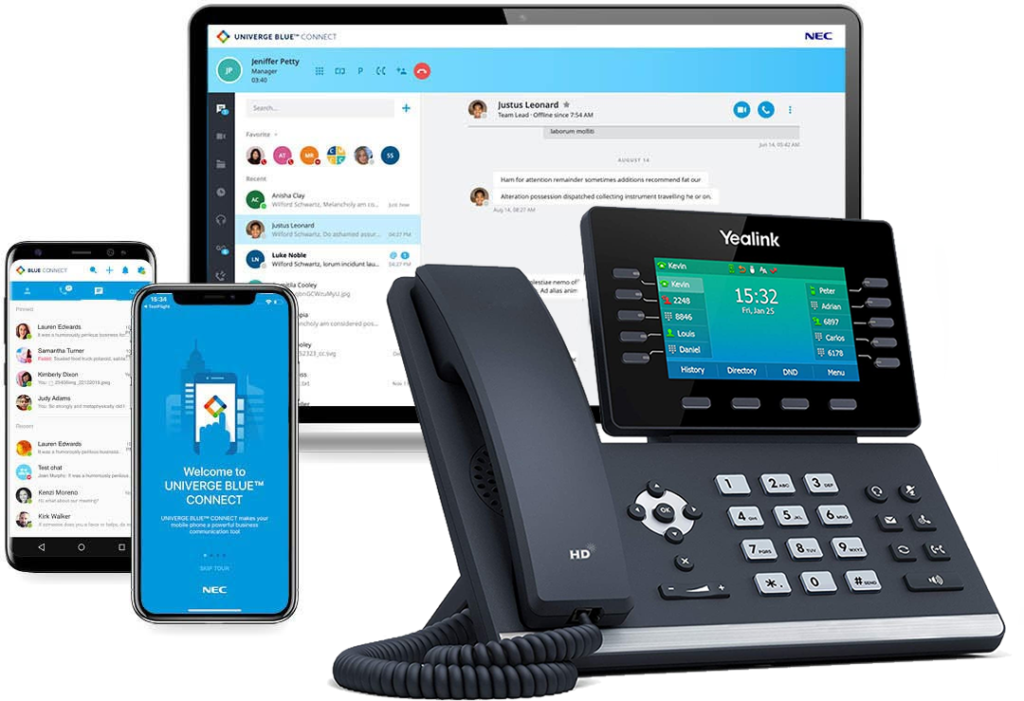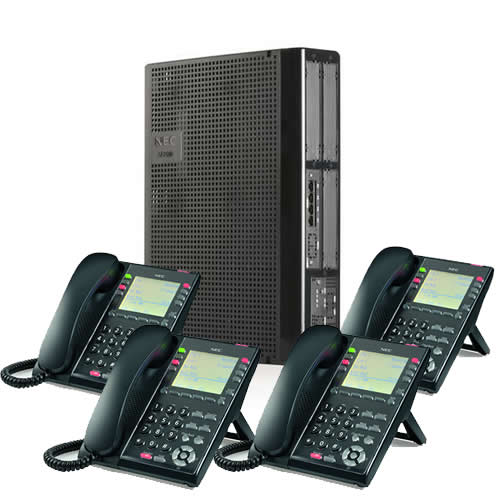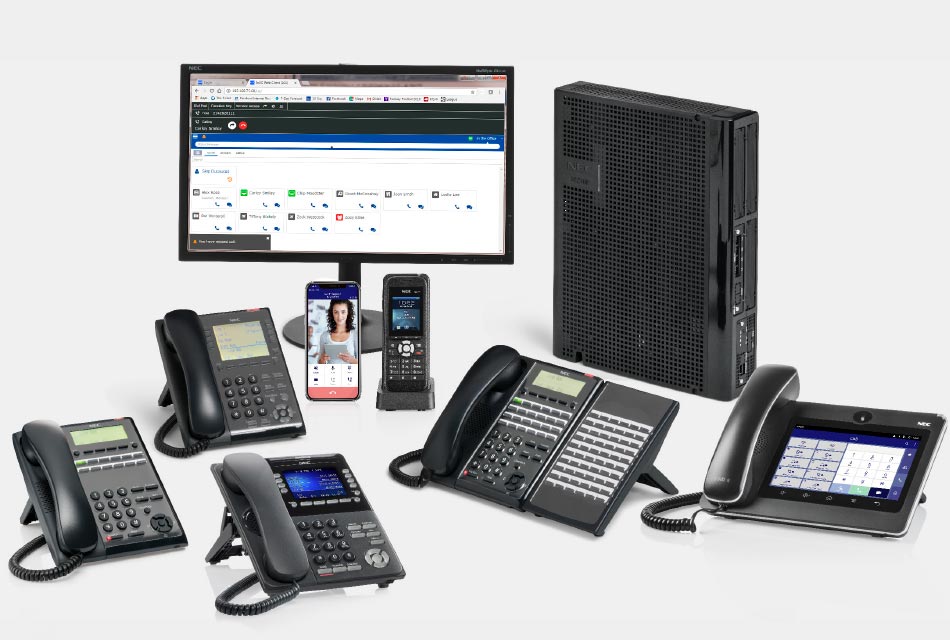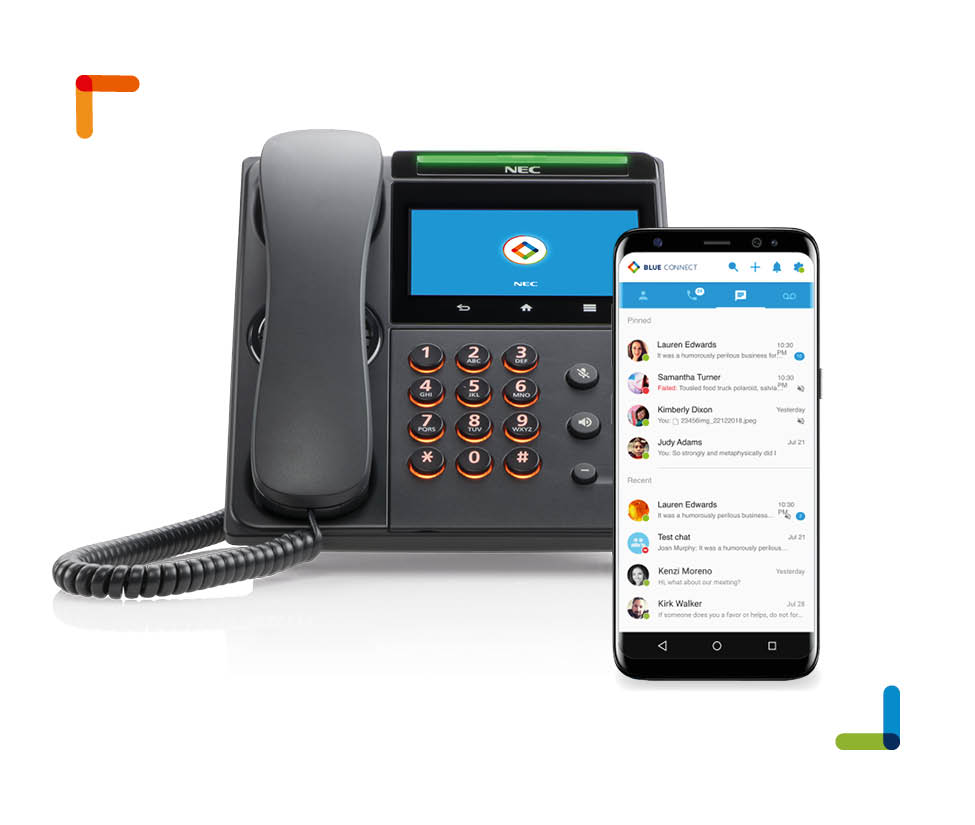Switching to VoIP is really a “no-brainer.” To get started, consider our most popular phone system, the Samsung OfficeServ phone system. We have VoIP telephone systems to match your needs and your budget.
Category: General Phone System Info
Enterprise VOIP Solutions
Posted onEnterprise VoIP solutions include digitizing, encoding, and sending voice telephone signals over the Internet or a data network. Businesses of all sizes can benefit not only from a cost perspective, but also in terms of quality of service and ease of use as well. Different VoIP solutions are available depending on your unique needs. For instance, would it make more sense for you to manage your telecommunications in-house, or outsource through a hosting service provider?
Enterprise VoIP solutions reduce the complexities and costs associated with an initial capital investment. Some VoIP solutions, like those from Samsung iDCS, allow administrators to control their systems through a web-based browser interface. Changes can easily be made to employees’ phone and voice mail settings.
Today’s enterprise VoIP solutions also feature heightened security measures. One of the main concerns regarding VoIP in its infancy was the threat that these networks would be subject to the same security risks as other data networks. Companies like Samsung and Panasonic have worked hard to vastly reduce the security risk associated with voice over IP networks.
In business, any measure that can be taken to reduce costs and streamline business efficiency should be seriously considered. Enterprise VoIP solutions accomplish just that, and that’s why more American businesses are switching to VoIP. Your cost savings over time will be significant, and your phone and data networks integrated like never before.

Business Phone Service
With UNIVERGE BLUE CONNECT, there is no phone system hardware to buy, install, manage, upgrade or replace. Combines your phone system, chat, video, screen sharing, file management and conference calling into a seamless business phone service that fits with your business size, needs, and work style.

NEC SL2100 Telephone System
The NEC SL2100 Telephone System works at a number of levels: a cost-effective VoIP enabled phone system, an easily expanded solution with entry-level unified communications with excellent upgrade potential.
Bulk Purchasing Telephone Systems
Posted onIf you are the owner of a telecommunications retail store or the CEO of a corporation looking to save on costs, bulk purchasing telephone systems may be a great idea. Obviously, the greatest benefit of bulk purchasing is the cost. By purchasing a number of telephone systems at once, you stand to receive significant savings on your total telephone system.
A plug-and-play telephone system often benefits from some of the same advantages as bulk purchases. Because these systems come complete with anywhere from 5 to 500 phones, purchasers can save money off of the normal retail price. This will allow businesses to buy a fully integrated system (and prevent any worries over incompatible parts) at a cost they can afford, with the exact system specifications they need.
Some examples of groups who may buy bulk telephone systems include businesses, universities, hospitals, and a variety of other organizations. An integrated telephone system will allow you to cut down on training time (since every employee has the same phone, cross-training is easily accomplished). In addition, you can order extra parts to keep around the office in case of any hardware issues. This will eliminate down time, as a problem component can be easily switched for another of the same model.
Bulk purchasing telephone systems can be a great option if you run a retail shop. The greater your selection, the happier your customers, and the more likely you are to make a sale. New telephone systems are coming on the market every day, so it is a good idea to keep your inventory stocked with the latest offerings.

Business Phone Service
With UNIVERGE BLUE CONNECT, there is no phone system hardware to buy, install, manage, upgrade or replace. Combines your phone system, chat, video, screen sharing, file management and conference calling into a seamless business phone service that fits with your business size, needs, and work style.

Plug And Play Telephone Systems
Plug and Play Telephone systems that are assemble, programmed and you can install yourself.
Plug And Play Telephone System
Posted on — Leave a commentPlug And Play Telephone Systems
You own a small business. You’ve purchased telecommunications products in the past, but you have never had an integrated system. Recently, certain parts have broken, so you are looking to upgrade your entire system to bring it into the 21st century. Can you find a full-service Plug And Play Telephone System that will allow you to utilize the technology you already have?
The answer is yes, if you choose the right system. Some Plug And Play Telephone Systems make upgrades, expansions, and integrations difficult. If your company gains a significant increase in business, you could find yourself unable to process all your phone traffic. With these issues in mind, it is critical that you not only examine the features provided with a particular system, but the system’s adaptability as well.
VoIP technology promises to make all of our lives easier. However, this new technology can still seem intimidating to some. In these circumstances, a VoIP-enabled Plug And Play Telephone System can be a great choice. You can benefit from all the advantages of VoIP technology (low cost, the ease of international communications) without the technical anxiety.
Voice Over IP Networking
Posted on — Leave a commentVoice Over IP Networking
Voice Over IP Networking encompasses a family of different technologies which allow Internet Protocol networks to be used for voice-related applications like telephony, voice instant messaging, and internet teleconferencing. Designed to help at every level of digital voice communication, VoIP breaks down the barriers traditionally associated with physical distance and phone circuits.
A number of popular phone systems use VoIP technology. Developers have created an industry that utilizes desktop applications, telephone services, and corporate phone networks. Voice over IP networking is the core programming that drives the whole system. Cross-platform functional and highly customizable, VoIP networking can be adapted for small businesses as well as corporations that employ thousands of people.
When it comes right down to it, Voice Over IP Networking was invented as a way to simplify corporate networks and improve telephony experiences for users of that network. Fortunately, it is also more cost-efficient and can save companies and even households substantially on their phone bills.
The primary roadblock to widespread consumer adaptation of Voice Over IP Networking is change. It’s easier to convince large businesses and corporations to switch, because the larger the network, the larger the savings. But small businesses and households are more difficult to sway, because they argue that their existing phone systems work just fine. VoIP networking saves money over the long term, and it improves phone efficiency at the same time.
VoIP Business Telephone Systems
Posted onChoosing a business telephone system for your company shouldn’t be a complicated process. The first step is to come up with a list of requirements that your phone system should have. If you’re deciding on a new system entirely, you should strongly consider Voice Over Internet Protocol, or VoIP.
VoIP is computer telephony integration that basically uses your business intranet to handle voice communication. The advantages to this system are many. VoIP allows for scalable design and lets you can incorporate voice communication into PC-based applications.
During the process of choosing a business telephone system, make sure that you inquire about all the different functions that are available. In addition to voice mail, it’s now possible to digitally encode voice mail into email, access any voice mail or email address remotely, and even convert faxes into viewable PDF documents which appear in your employees’ inboxes.
Most companies will eventually need to switch to a VoIP business telephone system. Until recently, only big corporations had the kind of capital and technical know-how to make VoIP work effectively and securely. Today, however, it’s easy for small businesses with as few as five employees to take advantage of the cost savings and increased capabilities of these IP based systems.

Business Phone Service
With UNIVERGE BLUE CONNECT, there is no phone system hardware to buy, install, manage, upgrade or replace. Combines your phone system, chat, video, screen sharing, file management and conference calling into a seamless business phone service that fits with your business size, needs, and work style.

NEC SL2100 Telephone System
The NEC SL2100 Telephone System works at a number of levels: a cost-effective VoIP enabled phone system, an easily expanded solution with entry-level unified communications with excellent upgrade potential.
Business Continuity and Disaster Recovery White Paper
Posted onWhat would happen to your business if your telephone lines were down for a day? How about a week? It is a question few business owners think about, but the fact is that a loss of communication with your customers might have devastating effects on your business. We recently had a situation arise that once again proved the value of a business continuity service.
One of our customers was moving to a new office. They were switching their telephone service to another carrier. The move in date was set. Our customer had to be out of their old office 7 days before the telephone company would have service in the new office. This could be a death sentence for some businesses – a whole week without contact from their customers. (In this case it was a medical facility which made the situation even worse!) The set-up of their usual telephone system is as follows:
Calls would ring into the auto-attendant and play the day greeting:
“Thank you for calling ABC Medical. For appointments, press 1. If you are an existing patient, press 2. For insurance, press 3. For an operator, press 0 or remain on the line.”
If a caller pressed 1, they would be transferred to 3 phones. If the call was not answered, the caller would be prompted to leave a message.
If the caller pressed 2, they would be transferred to 2 different phones. Once again, if the call was not answered they would be prompted to leave a message.
Pressing 3 would transfer the call to one telephone.
Pressing 0 would transfer the call to the same phones as option 1.
This is how we set up our business continuity service:
When a caller dialed the main telephone number for the practice, the call was forwarded to our business continuity service which answered as follows:
“Thank you for calling ABC Medical. For appointments press 1. If you are an existing patient, press 2. For insurance, press 3. For an operator press 0 or remain on the line.”
If a caller presses 1 it would transfer the call to one of three different cell phones. If the first cell phone was busy or did not answer the call would be sent to the second cell phone and so forth. If none of the cell phones answered the call the caller would be prompted to leave a message. The message was then sent via Email (.Wav file) to the 3 employee’s taking appointments.
If a caller presses 2 it would transfer the call to one of two cell phones. If the first cell phone was busy or did not answer the call would be sent to the second cell phone and so forth. If none of the cell phones answered the call the caller would be prompted to leave a message. The message was then sent via Email (.Wav file) to the 3 employee’s that handled existing patients.
Pressing 3 transfered the call to the home telephone of the employee responsible for insurance.
Pressing 0 transferred the call to the same phones as option 1.
Faxes were forwarded to the business continuity service and email to the employee responsible for faxes (we recovered about 20 faxes!).
The telephone lines were installed a week later and we switched the lines onto their new telephone system. None of their patients were any the wiser!
